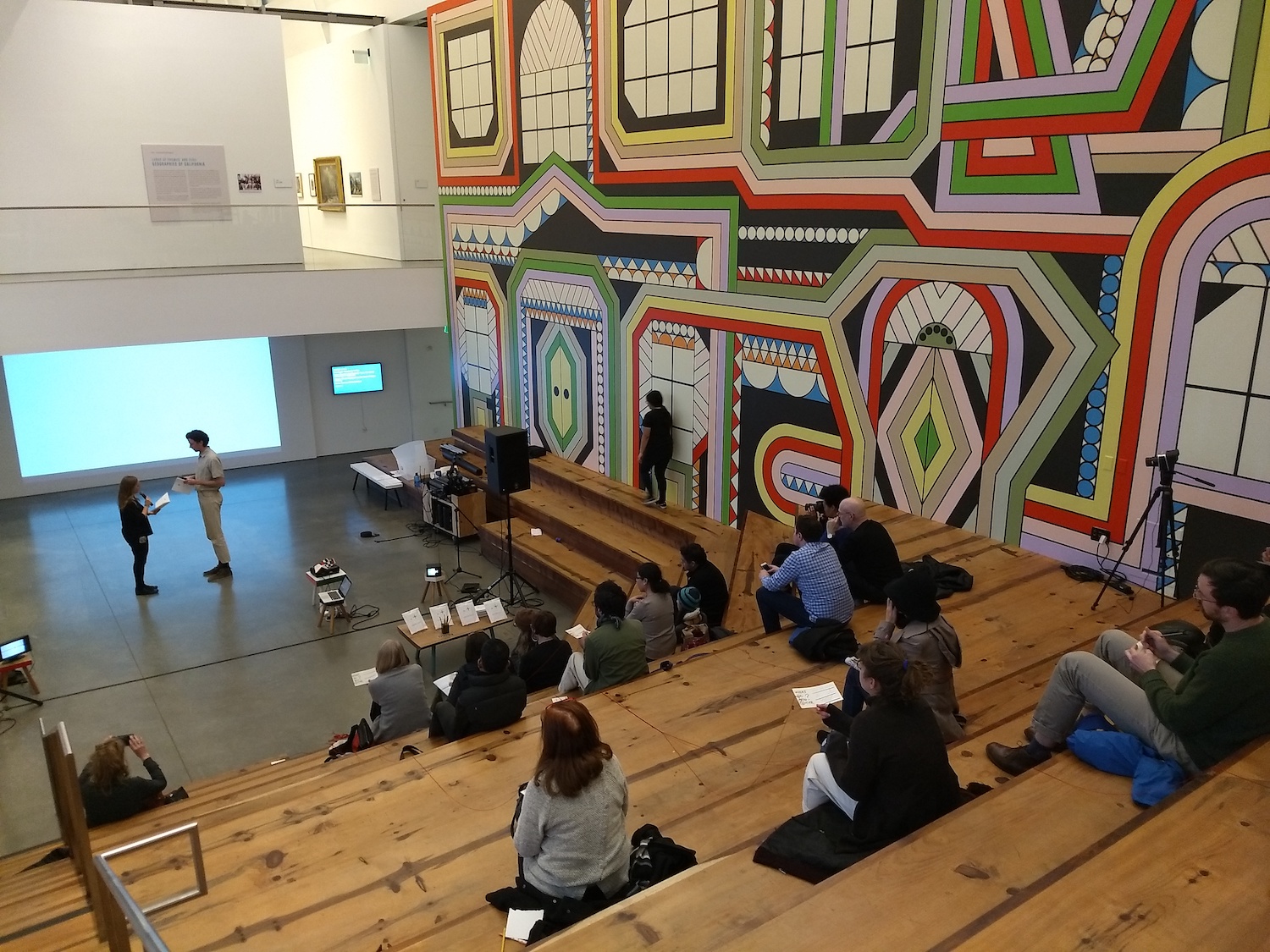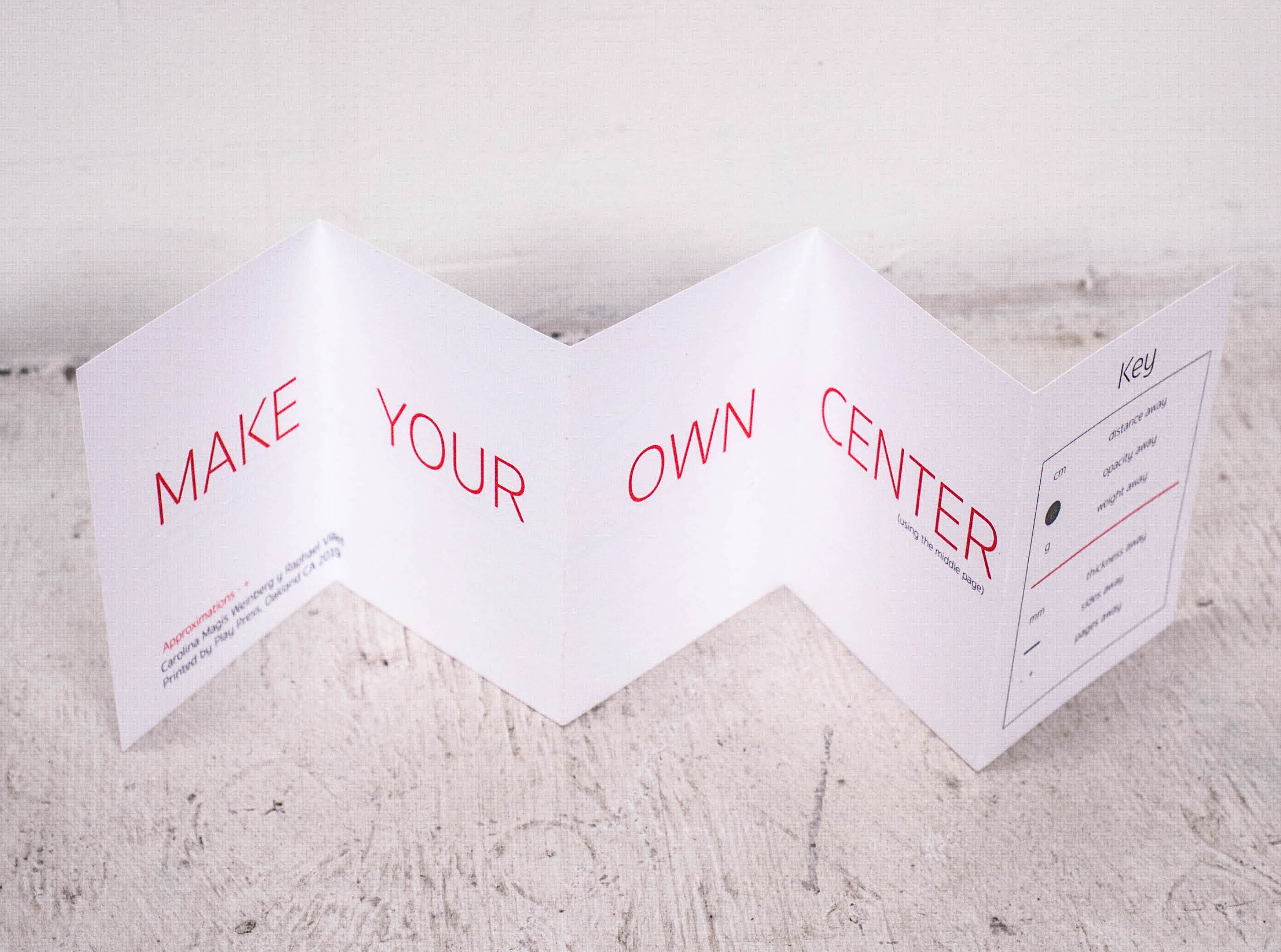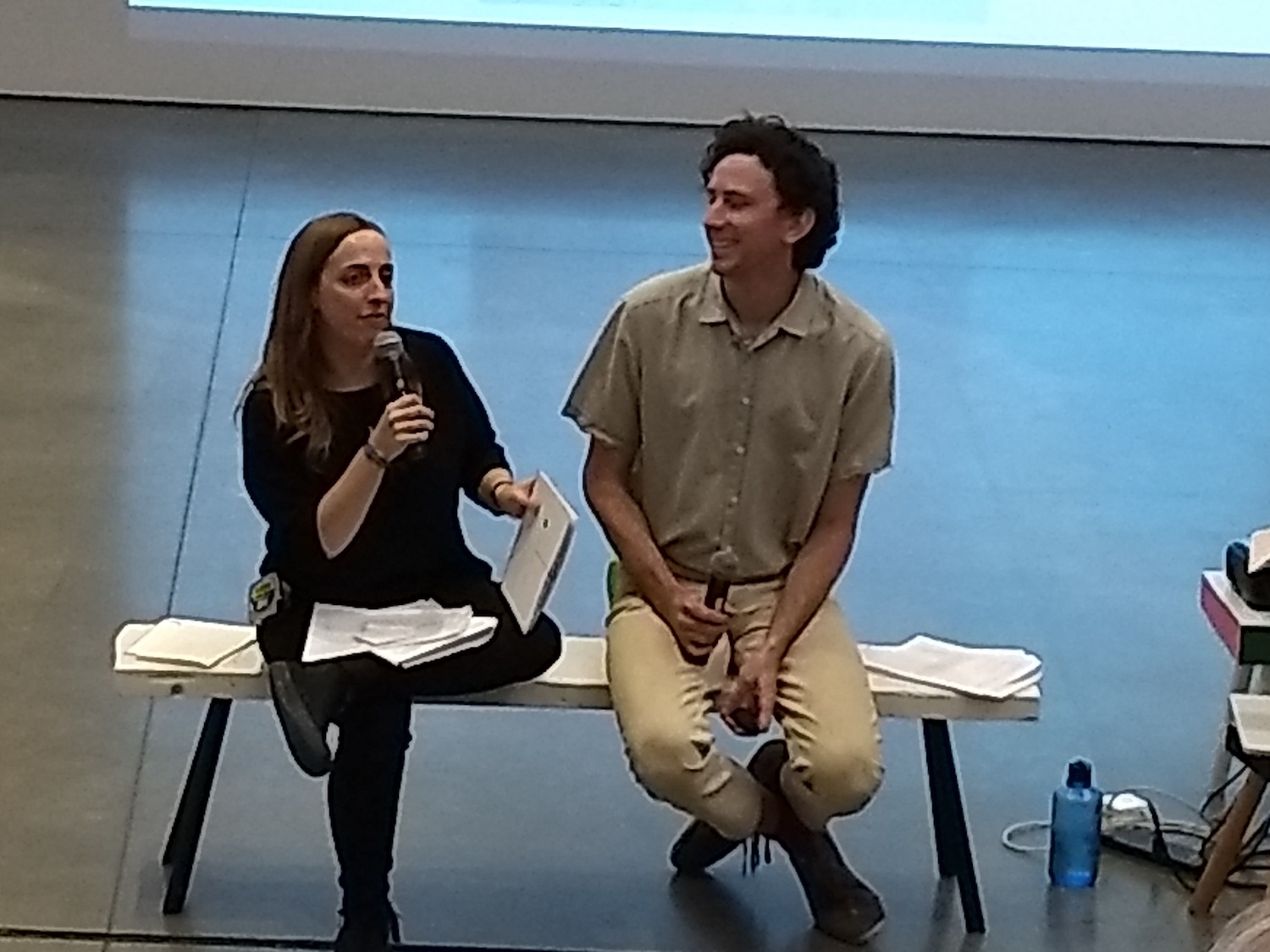‘What Do You Center?’ | Berkeley, California
“Approximations -+” is a project - and a book - created in a fascinating long distance collaboration between Raphael Villet in Berkeley, California, and Carolina Magis Weinberg in Mexico City, on getting to the center. They converged first in Mexico City and then in Berkeley, last January, for a performance/presentation of the project.


As we walked in, the performance had already started, and only a single steady voice was heard in the otherwise pin drop silence of the high-ceilinged room. Immediately, my vision narrowed to the bottom of the amphitheater which doubled as our entrance.
There was a lightness, an openness even, in the tone of the space. Artists Carolina and Raphael sat unassumingly in front of us, speaking in turns. Their neutral colored clothing did not draw attention, but the concentration of focus upon them from an engulfed audience, the microphones, the screen lighting from behind, the wooden stairs, the second floor framing, and the walls all converged to the center.

The center exists because of what is around it. Centers are formed by a relationship with their surroundings. We can perhaps easily think of a few physical centers--we connect all the people in our lives, a museum is a center for the viewing of art, there is a geographic center between Raphael in Oakland and Carolina in Mexico City as they created this book--but there are also centers in time, motion, emotion, and the increasingly abstract spaces.

This book, “Approximations-+: An Exploration of Daily Moments Through the Metaphor of the Center,” was created using a risograph printer, which mimics screen printing, mechanical but notoriously imprecise. The inexactitude, coupled with the Mexico city search for such a printer, added another layer of meaning to the question of what is a center, as Raphael and Carolina cut a hole in the center of the book. The pages denote distances from the center of the book using measurements, numbers, and notches.

The artists told the story of an accident, a hypothetical scenario in which two cars collide. Is it an accident or destiny? Is it meant to be or meaningless? Truly, these two people have been traveling towards each other for years and have met in the center. The whole presentation was a reflection on coming to a center, or one could say on coming to many centers, in the event of moving away from others. It was observing, measuring, and a process.
At intermission the audience was prompted by small pieces of paper attached to a red string reading, “What do you center?” Not where do you center or how do you center, but what do you center? I wrote: “My gut--my emotional, physical, and reciprocal center.” I have gut feelings. My gut is more or less the corporeal center of my body. My gut centers me; I center my gut.

As the presentation came to a close, I had the privilege of speaking with the artists and some of the audience members. Referencing the part of the show where Raphael and Carolina set up streamers from point A to point B in different locations on the stage and measured the distances, Jonathan Villet, Raphael’s father said, “Seeing it acted out, you think about the time it takes to come to a center, to leave a center and then you realize that the center is always evolving.” Ironically, even if the performance had ended, the idea of the center, the idea of the show and the book, never really ends.

My artistic brain is geared toward the literal, but as I contemplate the next move in my career in Education Technology, returning to school to study art, and leaving my home in San Francisco, I have realized that no matter where I move, I will find a center. There is no one center and it will always change but I, like everyone else, am in my center at each moment. Decisions whether fated or by choice will determine my future. The key to my solace is that no matter what that future is, it will find an emotional, physical, and abstract center.
Note: ‘Approximations-+’ is the second book of the Raphael Villet’s Play House Print Series. The first book, ‘Reading Me’ by Lukaza Branfman-Verissimo, was published in 2018. You can find out more about Raphael’s print company, Play Press, based in Oakland, California, and the variety of zines it publishes.
------------------------------------------------------
Artist and publisher Raphael Villet is an interdisciplinary artist exploring the possibilities of collaboration with people, materials, and space. His work invites users to consider their relationship to the world in small and large ways.  Working across textiles, painting, printing and photography he explores notions of value creation, power and self empowerment through self expression. His artwork has been featured in the Oakland Museum of California, The Tenderloin Museum of San Francisco and the San Francisco Arts Commission Gallery. His publishing house, Play Press works in deep collaboration with artists across the americas and has been archived and made available across the country. www.raphaelvillet.com
Working across textiles, painting, printing and photography he explores notions of value creation, power and self empowerment through self expression. His artwork has been featured in the Oakland Museum of California, The Tenderloin Museum of San Francisco and the San Francisco Arts Commission Gallery. His publishing house, Play Press works in deep collaboration with artists across the americas and has been archived and made available across the country. www.raphaelvillet.com
emergentartspace.org/artists
------------------------------------------------------